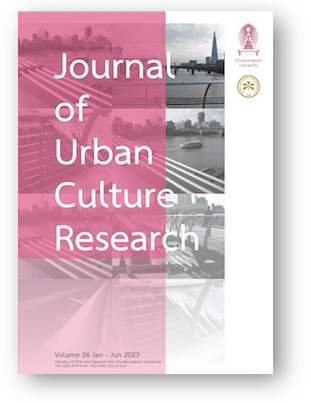Philippine Gabaldon Heritage School Buildings in the New Normal: Safety, Sustainability and Human Development Perspectives
DOI:
https://doi.org/10.14456/jucr.2023.3Keywords:
Heritage; Gabaldon School Buildings; New Normal; COVID-19; Sustainability; PhilippinesAbstract
As the COVID-19 pandemic has impacted education, stakeholders find means to return to the New Normal through limited face-to-face learning. The Philippine Gabaldon School Buildings (GSBs) are seen as venues where this can happen. Built from 1908 –1915, GSBs were erected during the American colonial government. Republic Act 11194 mandates these buildings’ conservation. Due to its perceived astounding structure and cultural value, a qualitative study was conducted that delved into the existing publicly available documents related to the buildings, for in-depth analysis. The investigation highlights how GSBs potentially address the minimum health standards relevant to the pandemic and limited face-to-face learning. It was also found that safety protocols can be observed in these structures given the spacious perimeter, good ventilation, and high ceiling for classroom acoustics. GSBs could also contribute to sustainability efforts in promoting local tourism. As these GSBs relay narratives over time, local heritage could exert effort to promote sustainability and local cultural community. In other words, the findings reveal that (a) GSB qualifies as a prospect venue for face-to-face learning due to its ventilation and dimension; (b) the building is seen as a sustainable tourism landmark; and (c) the structure contributes to individual and community human development.
Downloads
Published
How to Cite
Issue
Section
License

This work is licensed under a Creative Commons Attribution-NonCommercial-NoDerivatives 4.0 International License.
Authors authorize the JUCR to publish their materials both in print and online while retaining their full individual copyright. The copyright of JUCR volumes is retained by Chulalongkorn University.
The views and opinions expressed herein are those of the individual author(s) and do not necessarily reflect the policies or opinions of the Journal (JUCR), it editors and staff, Chulalongkorn University, or Osaka Metropolitan University.








